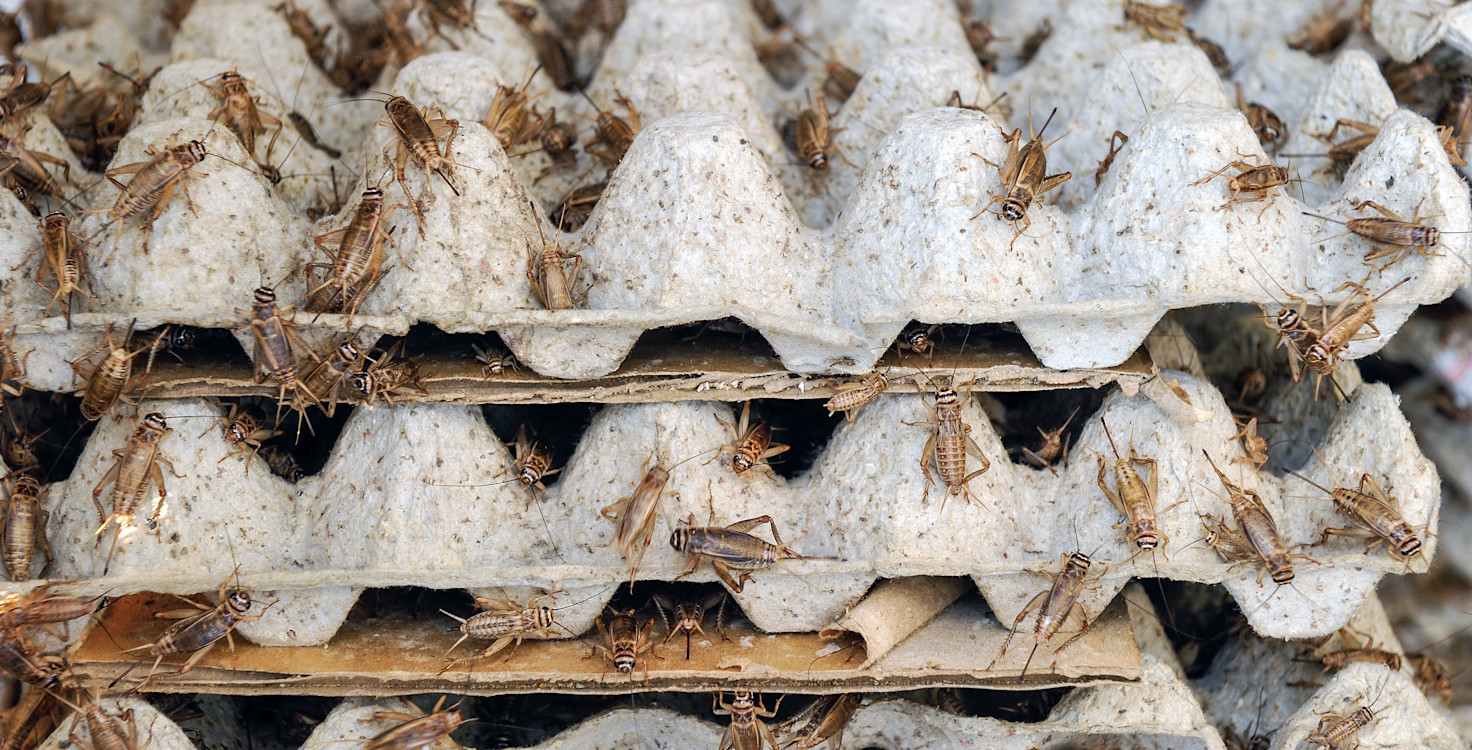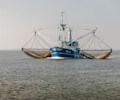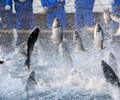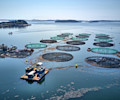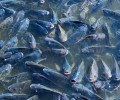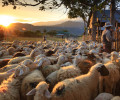Aquaculture is the fastest growing food production system in the world and there are now more farmed fish than wild-caught fish. Demand for farmed fish is growing – aquaculture is expected to provide nearly two-thirds of fish consumed globally by 2032. Consequently, what farmed fish are fed has implications – in terms of profitability and sustainability.
Insects have been touted as a more sustainable ingredient to use in animal feed in recent years, but the reality has not lived up to expectations. Despite receiving considerable investment, the industry has not scaled, while also exposing aquaculture companies and investors to environmental risks.
This insight piece outlines why sustainable feed alternatives are needed to support the growing aquaculture industry and the challenges, potential material risks and implications for investors and companies of using insects as a feed ingredient.
Why are feed alternatives needed in aquaculture?
Numerous farmed fish species – such as salmon, trout, shrimp – are typically fed with fish meal and fish oil (FMFO), which are produced from wild-caught fish such as herring, sardines and anchovies.
However, 90% of the world’s fisheries are overfished or used at maximum capacity, and are increasingly vulnerable to the impacts of climate change.
As the global supply of wild-caught fish for feed is limited, future aquaculture production faces significant risks if it continues to rely on FMFO for feed, as prices are likely to increase, eating into company profits and investor returns. This is already recognised by some of the world’s largest salmon producers, such as Mowi. Investors and companies are also exposed to regulatory risks as governments continue to tighten restrictions on fishing quotas, as Peru did in 2023.
Additionally, FMFO production causes serious environmental harms, disrupting ocean ecosystems, reducing biodiversity and driving the carbon footprint of aquaculture, exposing investors to other material financial risks, as highlighted in some of FAIRR’s previous research on aquaculture.
To address these supply and sustainability challenges, many companies have started exploring which novel alternative ingredients can replace FMFO.
Insect meal: A seemingly green solution
One ingredient that has garnered considerable attention – and investment – in recent years is insect meal, intended to replace fish meal.
Insects – mostly black soldier flies, mealworms and crickets – are raised in industrial, climate-controlled environments. Once mature, they are harvested, dried, and ground into insect meal, with approximately 1 trillion insects raised on farms annually for food and animal feed as of 2020.
In 2021, Rabobank estimated that the demand for insect protein could rise four-fold, from 120,000 tonnes to 500,000 tonnes by 2030, and that up to 200,000 tonnes – or 40% of the total insect protein market – could be used for aquaculture feed ingredients.
Reflecting this predicted growth, insect farming attracted significant investment, with around US$1.9bn directed towards start-ups between 2014 and 2024, and flows ramping up noticeably between 2020 and 2022.
But it is now increasingly clear that the insect farming industry has struggled to achieve its commercial and sustainability goals, with growing concerns about its viability, carbon footprint and high energy costs, and its appeal to investors has diminished.
So, what has gone wrong, and what makes it so challenging to use insects as a fish meal alternative?
Barriers for aquaculture feed: High prices and low volumes
The insect farming industry aimed to achieve price parity with traditional aquaculture feed ingredients such as fish meal, to compete as an alternative. However, insect meal prices have remained stubbornly high, despite almost two decades of research and development.
In 2023, the cost per tonne for insect meal was much higher (US$3,800-US$6,000/tonne) than existing aquaculture feed ingredients – nearly three times that of fishmeal (US$1,815/tonne) and ten times that of soybean meal (US$541/tonne).
Insect farming has proven to be far more energy-intensive than anticipated, and many insect farming companies have had to rely on expensive, high-quality feed-grade inputs, rather than using waste products.
This has limited global availability of insect meal for aquaculture to just 12,000 tonnes per year, one-tenth of what was expected, deterring aquaculture companies such as Lerøy Seafood from adopting insect feed ingredients at scale.
Skretting, the world’s largest fish feed producer, has also highlighted the “small volume availabilities and unfavourable market economics of replacing fish meal or soy protein concentrate with a more expensive insect protein” as major challenges preventing insects from being a viable alternative to FMFO.
Environmental impact: A step backwards
Transforming food waste into feed was one of the biggest advantages insect farming was supposed to provide, but companies have faced serious technical and regulatory barriers to establishing circular production.
Insects fed with low-quality inputs like manure, household, slaughterhouse or catering waste, have lower growth rates, poor nutritional quality, and are associated with food safety concerns, creating a low-quality feed ingredient that has proven unsuitable for aquaculture.
Furthermore, in the EU, restrictions on feeding most waste streams to insects means most companies have to use feed-grade grains to raise insects – not food waste. As a result, 75% of insect producers use fruits, vegetables and cereals, which are food or feed-grade.
Additionally, one-third use commercial animal feed to rear insects. Instead of upcycling food waste, insect farming companies are directly competing with resources for human or farmed animals.
Recent research also shows that insect meal has a higher carbon footprint than fishmeal and plant-based ingredients, contradicting earlier expectations around the industry’s sustainability.
The unclear trajectory of insect farming
Despite receiving nearly US$2 billion, including a surge in venture capital, the insect farming industry has struggled to reach scale and profitability, with investments declining by 65% between 2022 and 2024.
Construction delays, uncompetitive prices, low volumes and lack of market adoption have culminated in companies facing serious financial difficulties. The French company Ynsect, once the world’s largest insect farming start-up, is a sobering example of these challenges.
Since its founding in 2011, the French climate tech unicorn had raised US$600 million, representing nearly one-third of all investments in insect farming companies. However, the company became insolvent in February 2025 and peers such as Agronutris face similar financial challenges as of early 2025.
Navigating towards viable alternatives for aquaculture feed
While the use of insects in animal feed has fallen short of expectations, finding alternatives to FMFO remains critical. Indeed, the future viability, growth and sustainable value of aquaculture is dependent on companies diversifying the ingredients that make up their fish feed.
Alternative ingredients such as algal oil and single-cell protein have potential to transform the aquaculture feed industry, if they can overcome the commercial challenges and environmental risks that have hampered insect farming.
Investors can support this transformation, either by encouraging aquaculture companies to research such ingredients, or by exploring the investment opportunities that feed companies at the forefront of developing such alternatives might offer.
FAIRR insights are written by FAIRR team members and occasionally co-authored with guest contributors. The authors write in their individual capacity and do not necessarily represent the FAIRR view.
